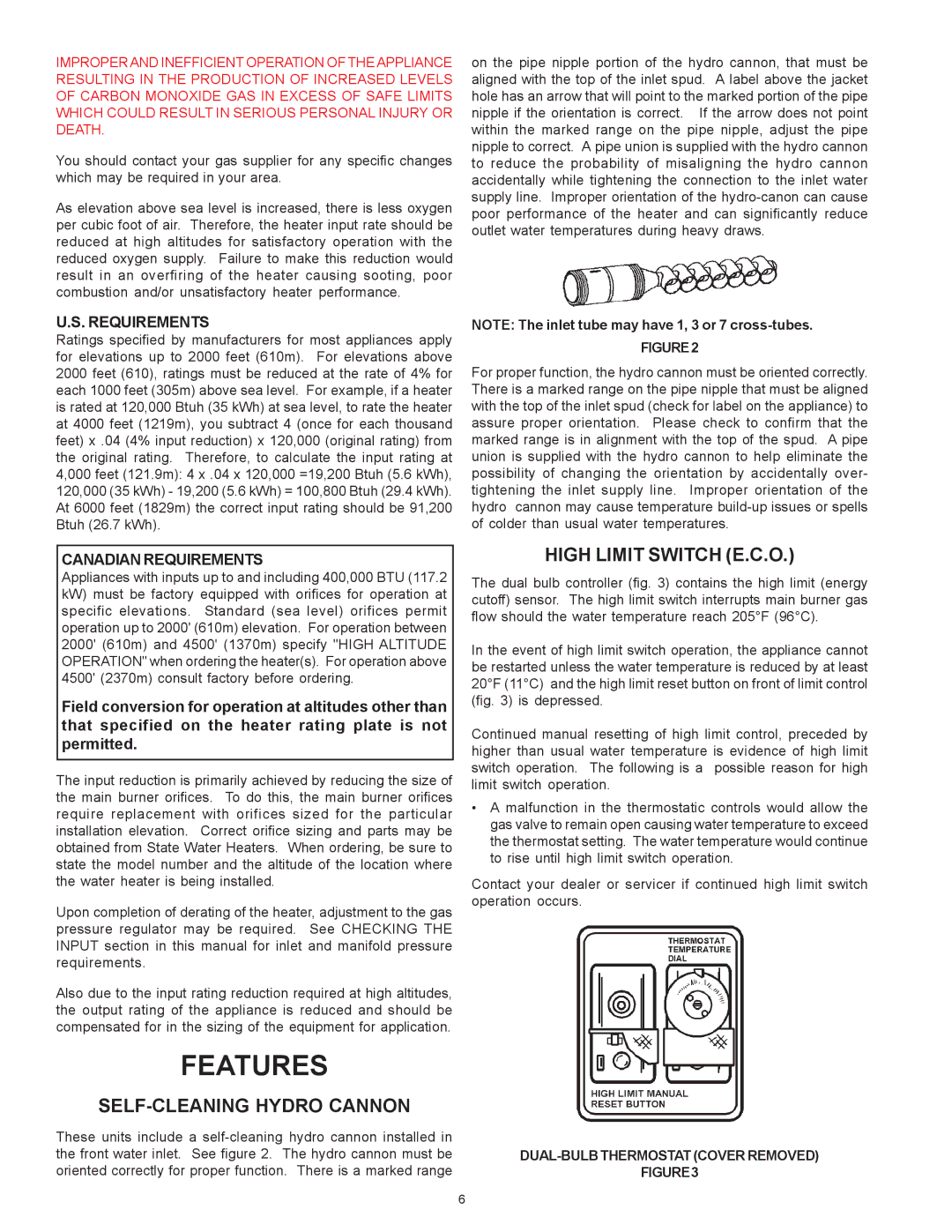THRU SBD85500NE, SBD71120NE specifications
State Industries' SBD71120NE and SBD85500NE are innovative water heaters designed to deliver superior performance and efficiency for residential and commercial applications. These models are part of State Industries' commitment to providing reliable and durable products that meet the diverse needs of consumers.The SBD71120NE features a capacity of 71 gallons, making it an ideal choice for households with high hot water demand. This model is equipped with advanced insulation technology that minimizes heat loss, ensuring energy efficiency and cost savings over time. With its high energy factor rating, the SBD71120NE not only meets but exceeds the stringent energy efficiency standards set by the Department of Energy. The unit is powered by natural gas, providing quick heating capabilities and a reliable source of hot water when needed.
In contrast, the SBD85500NE has a larger capacity of 85 gallons, catering to larger households or commercial settings with increased hot water requirements. This unit also employs advanced insulation materials that contribute to reduced operating costs and enhanced thermal efficiency. The SBD85500NE utilizes a high-performance power vent system, which facilitates efficient venting of combustion gases and allows for flexible installation options.
Both models are equipped with modern controls, providing users with easy access to temperature settings and diagnostics. The straightforward digital display allows for intuitive adjustments, ensuring optimal water temperature while promoting safety. Furthermore, both units come with a robust warranty, reflecting State Industries' confidence in the durability and longevity of their products.
One of the standout features of the SBD71120NE and SBD85500NE is their compatibility with smart home technology. Integrating these units with a smart thermostat enables users to monitor and manage their hot water usage remotely, thus contributing to more efficient energy consumption.
In conclusion, the State Industries SBD71120NE and SBD85500NE represent cutting-edge technologies and superior craftsmanship. Their respective sizes and capacities make them suitable options for a variety of applications, ensuring reliable hot water delivery while promoting energy efficiency and cost savings. With their advanced features and solid construction, these water heaters are designed to stand the test of time, providing homeowners and businesses with peace of mind and satisfaction.

